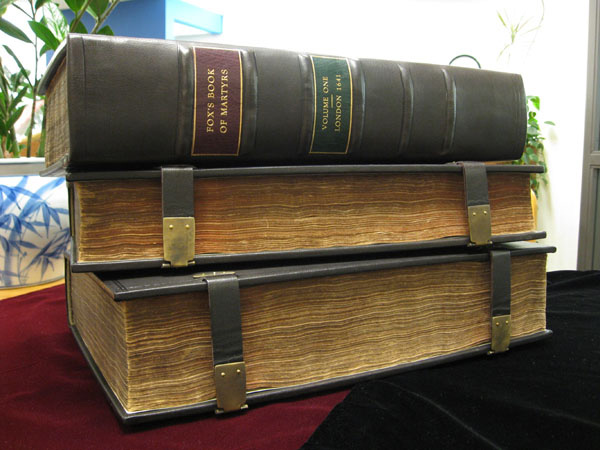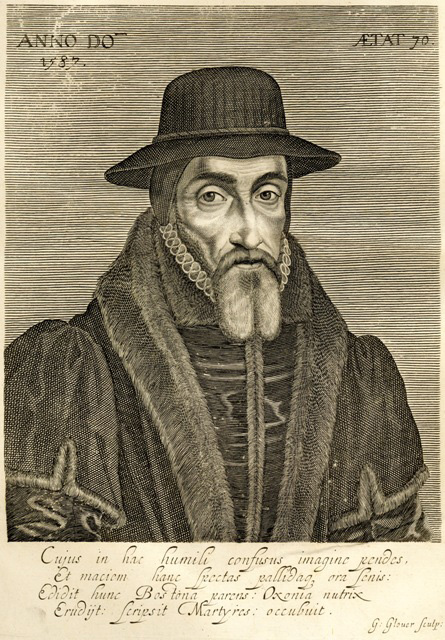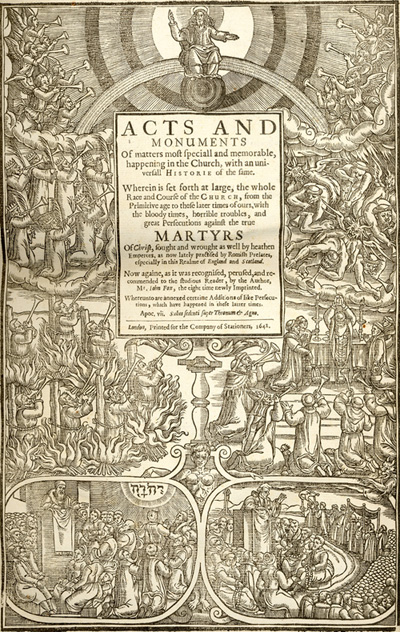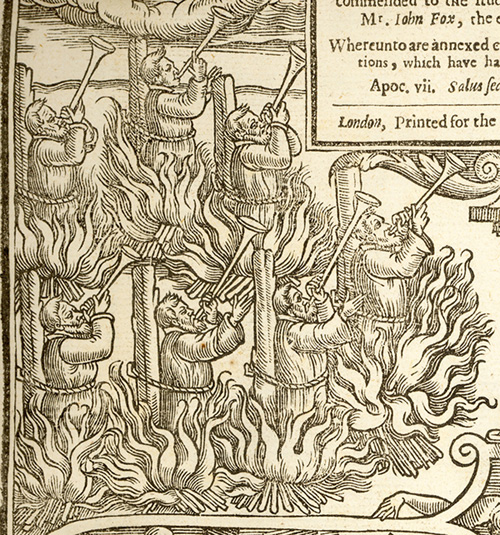In the continuing project to restore key volumes in the Archives & Rare Books Library, UC Libraries’ Preservation Services has completed work on John Foxe’s Actes and Monuments of Matters Most Special and Memorable, Happening in the Church – more popularly known as “Foxe’s Book of Martyrs.” This fundamental work of Christian hagiography, first published in Latin in 1559 at Basel, had its first English printing in 1563. There were many subsequent editions over the next three hundred years. The Archives & Rare Books Library holds both a 1596 edition, and this restored one, the three-volume 1641 printing. Both these editions are widely used by students and faculty in history, art history, English, and religious studies.
John Foxe was born in 1517 in Lincolnshire, England and took his degrees at Oxford, where he also subsequently lectured. A follower of the Protestant movement in England, Foxe left Oxford in 1545 in what is regarded as a purge of Protestant faculty. After tutoring for a short time for various aristocratic families, Foxe left England in 1553 with the accession of Mary I to the throne. He spent the next few years in dire straits as he moved throughout Europe, writing religious pamphlets and avoiding the persecutions of Protestants under Mary. He did not return until after Mary’s death in 1558.
Foxe’s Martyrs is apocalyptic in tone, written as a chronicle of Western Christianity and recording the creation of the Church of England during the Reformation. The first part is concerned with the early martyrs of the church and lurid anti-Catholic tales, and the second part tells of the reigns of Henry VIII and Edward VI. The third and final part tells of the persecutions under Mary I. Martyrs, in essence then, is an account of anti-Protestantism in England, the Inquisitions, and the burning of Protestants at the stake. It is also viewed as a book of rights for English Christians to follow their own beliefs and establish their distinct identity as Englishmen. For this reason, Foxe’s work has remained popular through its many editions and abridgments.
Conservator and bookbinder Gabrielle Fox contracted with Scott K. Kellar of Chicago to do the restoration. Kellar established his studio in 1994 after training at Monastery Hill and working at both the Newberry Library and Northwestern University Library. An award-winning bookman whose work has been internationally recognized, Kellar’s artistry is evident in the three volumes. The original bindings, suffering from red rot and other damage, were removed but retained as part of the books’ history. The books were repaired and rebound in full leather, with handmade endsheets. Kellar then blind-tooled the leather to match the design on the original boards. The spines were labeled and tooled to match the period design of the original bindings, and new fore-edge straps and clasps were made. Dropspine boxes were constructed in dark brown cloth and gold-stamped leather labels.
This seminal work, beautifully restored, is now available for research and teaching for the next three hundred years.
SpecCol RB BR1607.F6, 3 vols., oversize.
By Kevin Grace




